|
|
by Cathy Bylinowski, Horticulture Instructor, University of Missouri Extension- Jackson County I frequently look at other people’s yards and gardens and admire their flowers, trees, and shrubs. If I see a plant that is new to me, I try to figure out what it is, if it will grow in my yard, and where I can buy one! This spring, take some time to enjoy the flowering trees and shrubs in your neighborhood, parks, and green spaces around you. If you see some you like, now is a great time to figure out what they are and if they will grow in your yard. Spring is also a good time to plant new flowering trees and shrubs. They provide enjoyment for years to come. Here are several spring-flowering trees and shrubs that grow well in our part of Missouri: Serviceberry- (Amelanchier arborea) Serviceberry, native to Missouri, is an attractive small tree with smooth gray bark. It grows on wooded slopes. The snowy white flowers appear in early spring before anything else in the woods has leafed out. Tasty berries appear in June and leaves turn pink and orange in the fall. Unfortunately, invasive, non-native Callery Pears (Bradford Pear being one type) are blanketing open areas. Do not mistake the white flowers of Callery Pears for Serviceberry! Flowering dogwood- (Cornus florida) White flowering dogwood is a popular native flowering tree. Johnson County, Missouri is the nearest natural occurrence of this tree in our region. It will grow in our region, if it is put in a protected, part- shade location. Growth is fairly slow. Their branches are open and horizontal, with a rounded mature shape. They can get up to 30 feet tall. Their spectacular white bracts appear before leaves. Small, red fruit persist in fall and attract songbirds. It has lustrous, scarlet foliage in fall. They can be used as specimens, in masses or naturalized under larger trees, preferring moist, humus rich, slightly acidic soils. Avoid planting in hot, dry places. Use an organic mulch under the tree. Dogwoods need water during drought. Old or injured specimens are subject to insect borer damage. Eastern redbud (Cercis canadensis) Redbuds can get up to 30 feet tall. The clusters of purplish pink small flowers appear before leaves emerge. Heart-shaped leaves turn yellow in fall. Plant redbuds as specimens, in masses, or naturalized at the edge of woods. They are hardy in sun or part shade and tolerate a wide range of soils. Common Lilac (Syringa vulgaris) Lilac is one of the best known and most widely planted of all the introduced, flowering shrubs. Lilacs are worth having in your yard or garden for their once-a-year display of incredibly fragrant flowers. For the classic lilac fragrance, plant Common Lilac or one of its hybrids. Lilacs get up to 9 feet tall. Lilacs perform best in well-drained soils in full sun. Plants should receive at least six hours of direct sun each day for maximum bloom. Proper pruning is necessary to keep lilacs attractive and to promote flower production. After the plant becomes established, about one-third of the old stems should be removed each year. Older lilac stems may be attacked by borer insects. Flowering Magnolias (Magnolia soulangiana) These magnolias look like beautiful pink clouds in the spring. The only drawback is that the flowers can be damaged by spring freezes. You might enjoy the scented flowers so much that you are willing to take the risk of flowers turning brown after a spring freeze. There are cultivars that bloom later in the spring with pink, purple, or yellow flowers. Some magnolias can get to 30 feet tall. Plant in protected parts of your yard away from southern exposures. These are only some of the many trees and shrubs, native and introduced, that offer beautiful spring color. Contact Extension Master Gardener Hotline for more information:816-833-TREE (8733) – 24-hour voicemail [email protected] Flowering or Saucer Magnolias provides spectacular color in the spring.
From Pixabay by Ceeline (StatePoint) The perfect landscape may start with a healthy, lush lawn, but for interest and depth, you’ll also need to consider the plants that surround it.
Thankfully, it’s easy to make considerable improvements to your backyard life using tips from professionals. Landscape designer Doug Scott has partnered with lawn care equipment manufacturer Exmark, to offer these tips for selecting and installing plants that will beautify your outdoor living areas. Choosing Plants • Choose plants well-suited for your specific growing conditions. Knowing your growing zone is important, however you should also be mindful how conditions like sun exposure can change as you move around your yard. • Choose the right size plants for the space. Bear in mind that what you’re planting today is much smaller than what it will be once it’s matured. Always read a plant’s care label to understand its optimal growing conditions and size at maturity. • From a design perspective, think in terms of texture, layers and drifts. When addressing the overall texture of your planting beds, choose plants that vary in form, size, color and leaf structure. This will create greater interest, and a space that’s more visually appealing and enjoyable to spend time in. For a lush look, think in terms of layers when considering composition. Much like in a painting, you should have background, middle ground, and foreground layers. Your background layer should consist of taller evergreen shrubs to provide something alive and green to look at all year long, no matter what’s happening in front of them. Your middle ground layer should be lower than the background layer to create interest, and is where you can add a contrasting evergreen shrub or pop of color with a perennial plant. Finally, your foreground layer should help transition the planting beds to your lawn space. You can accomplish this with smaller perennials, evergreens, annuals or creeping ground covers. When addressing drifts, read the plant labels to know how large they’ll grow. This can help ensure plants grow in together as they mature, but are not overcrowded. Installing Them 1. Dig a hole that’s about two times the diameter of the pot your plant’s being transplanted form, and about the depth of the pot. 2. Mend in compost or soil conditioner to give your plant the organic material it needs to thrive. If you’d like, add slow-release fertilizer, and mix well. 3. Place your plant in the hole, making sure that it sits at, or just above, the level it did in the pot. 4. Backfill with soil, stopping to add water when the hole is about halfway full. 5. Fill the rest of the hole with soil, then firmly press down. 6. Soak your plant with more water. 7. Finish by adding mulch, making sure it’s pulled away from the base of your plant. Scott offers more insights in “How to Choose Plants for Landscaping,” a recent episode of “Done-in-a-Weekend Projects,” an original series from Exmark. To watch the video, visit Backyard Life, which is part of a unique multimedia destination with a focus on helping homeowners make the most of outdoor spaces. “Now that you have the inspiration and know-how needed to choose and install plant material, you can create landscaping that reflects who you are and how you’d like to live outside,” says Scott. by Linda Geist, University of Missouri-Extension
The phrase “waste not, want not” goes back to a time when the essentials of life were difficult to obtain, but it continues to be good advice today, says University of Missouri Extension horticulturist David Trinklein. It applies even to ashes produced this time of the year by wood-burning fireplaces and stoves. “When collected and spread on the garden, wood ashes are an excellent and free source of calcium and other plant nutrients,” Trinklein said. Wood ashes are highly alkaline. As a safety precaution, wear protective glasses, gloves and a dust mask when spreading on the garden. Ashes from burning cardboard, trash, coal or treated wood of any type may contain potentially harmful materials and should not be used on the garden. Ashes are the organic and inorganic remains of the combustion of wood. Their composition varies due mainly to the species of wood. As a rule, hardwood species produce three times more ashes and five times more nutrients than softwood species, he said. Since carbon, nitrogen and sulfur are the elements primarily oxidized in the combustion process, wood ashes contain most of the other essential elements required for the growth of the tree used as fuel. By weight, wood ashes contain 1.5%-2% phosphorus and 5%-7% potassium. If listed as a fertilizer, most wood ashes would have the analysis of 0-1-3 (N-P-K). Calcium content ranges from 25% to 50%. Because of the high calcium content, it’s probably best to think of wood ashes as a liming material to adjust soil pH rather than a regular fertilizer to supply an array of nutrients, said Trinklein. The ideal pH range for most garden plants is about 6.0 to 6.5. When soil pH falls below this range, certain essential mineral elements become less available to the plant. Since garden soils tend to become more acidic as plants take up nutrients, periodic adjustment to decrease soil acidity (increase pH) is necessary. Most wood ashes have an acid neutralizing equivalent of about 45%-50% of calcium carbonate (limestone). In other words, it takes about twice the weight of wood ashes compared with limestone to cause the same change in soil acidity. For example, if soil tests indicate you need 5 pounds of limestone per 100 square feet of garden area to raise the soil pH to an acceptable level, you would need 10 pounds of wood ashes to make the same change, Trinklein said. Apply small amounts of wood ashes to the garden on a yearly basis to supply other nutrients such as phosphorus and potassium. Trinklein recommends a soil test every two to three years where light applications are made on a regular basis. Excessive application of wood ashes can lead to a buildup of pH above the optimum range. This can result in other nutritional problems because of reduced nutrient availability at high pH values. Wood ashes not applied to the garden immediately should be stored under dry conditions. Ashes piled outdoors lose most of their potassium in a year’s time due to leaching from rains. Additionally, weathered wood ashes’ ability to act as a liming agent also is greatly reduced. Because of the fine nature of wood ashes, they cannot modify soil structure and, therefore, are not considered a soil conditioning agent. The carbon compounds that act as a soil conditioner when sawdust, leaf mold or compost are applied to garden soil, for the most part, have been consumed by the fire. For more reliable, research-based information on gardening, contact Master Gardeners of Greater Kansas City Gardeners Hotline- 816-833-TREE (8733) or email- [email protected] by Cathy Bylinowski, Horticulture Instructor, University of Missouri Extension EMGs of the Master Gardeners of Greater Kansas City chapter are here to help you learn to grow. We are volunteers under the auspices of University of Missouri Extension. We help you learn more about gardening by providing researched-based information and reliable best practices for a wide range of gardening topics. We receive fourteen weeks of training by MU Extension horticultural specialists and then pass that knowledge on to you and your families at educational gardening projects, children’s programming, and special events in Clay, Jackson, and Platte Counties. You can find information about our chapter and volunteer program by going to our website- mggkc.org or by finding and following our Facebook Page– Master Gardeners of Greater Kansas City. How EMGs can help you:
To subscribe to these YouTube videos, click on the big red Subscribe button from the site referenced above. Once you subscribe to a channel, any new videos published will show up in your Subscriptions feed.
Saturday, March 9 is the first Annual Spring Fling Gardening Celebration at the Young School at Truman Heritage Habitat for Humanity, 505 N. Dodgion Avenue, Independence, MO 64050. Free event for interested gardeners and families.
· Do you have a gardening question and need help? - Send your questions to our Hotline by calling or emailing our team- 816-833-TREE (8733) – 24-hour voicemail or [email protected] Please include your county, phone number and any pictures that would help us assist you in your email)
Have more questions? Contact Horticulture Instructor Cathy Bylinowski, [email protected] for more information. Extension Master Gardeners of Greater Kansas City maintain a Food Pantry Garden at 18th and Broadway where they demonstrate how to grow a wide range of vegetables and herbs and donate produce to local food pantries and community kitchens. Photo credit: Master Gardeners of Greater Kansas City
by Maddie Est, Missouri Department of Conservation
As heavy snowfall has impacted the region recently, trees around northeastern Missouri may be damaged under the weight of the snow or the strength of the wind. The Missouri Department of Conservation (MDC) reminds homeowners to check their trees for any damage from the recent winter weather. Storm damage to trees can lead to structural issues with the tree which may pose a threat to your property. Maintaining your trees regularly each winter helps to ensure that any changes to the integrity of a tree are noticed quickly, and it is important to check on the stability of your trees post-storm. Foresters with MDC suggest walking your property and searching for damaged trees or branches post-storm. Be sure to check for live power lines before approaching any damaged or downed trees; If there are power lines running through the damaged tree, do not approach the area. Instead, call experts to safely remove the debris. For trees that are not entirely downed, check how extensive the damage is – if over 50% of the crown of the tree and the root systems are still intact, then the tree is worth saving. Remove any compromised limbs, and do not severely prune the tree as this may weaken the tree. If you have questions about the integrity of a tree, contact a certified professional arborist. You can also contact your local MDC forester with any questions regarding managing trees on your property. Find a list of local MDC contacts at http://short.mdc.mo.gov/4ok. by Dr. Tamra Reall, University of Missouri Extension
There are yellow, orange, red ladybugs - are they all actually ladybugs? Yes, they are all part of the ladybug family! Ladybugs, also called ladybirds, belong to a big beetle family. Ladybugs are oval-shaped and can be yellow, orange, or red like what you have found. They can also be gray, black, brown, or even pink! Sometimes they have spots, but not always. So, if you see a little beetle with an oval body and different colors like yellow, orange, or red, it might just be a ladybug, even if it doesn’t have spots. Ladybugs come in lots of beautiful colors! Why can bugs and spiders live inside our house during winter, but there aren’t any insects outside in the cold? Think of our homes as cozy hideouts for insects and spiders during winter! Just like we find our houses warm and comfy, these critters seek refuge from the freezing cold outside. Those who come indoors may not be built to be active outside in the chilly temperatures, so they move inside where it's warm and there's food. Our homes offer refuge for them to stay snug until it gets warmer outside. You might be happy to know that not all arthropods can survive the winter indoors because our homes are usually too dry for them. Common arthropods that come inside are nonnative ladybugs, stink bugs, or spiders. If you find them indoors, you can gently scoop them up and release them back outside. Or you can use a vacuum. But watch out—some insects, like stink bugs, can give off a funky smell if vacuumed up! Also, after cleaning, remember to empty the vacuum and take out the trash to keep these uninvited guests from returning! How do insects survive when it gets so cold or warm in the same week? Insects are experts at handling changing weather. As fall and winter arrive, some insects enter a dormant stage called diapause, almost like hibernation, to prepare to survive harsh conditions. Many insects rely on light to let them know what season we are in, rather than the temperature because it can change so much during our winters. So, even if it warms up for a day or two, they will stay in their dormant stage. Other insects can adjust to the changing temperatures and emerge or become active as the weather is favorable. Still, others do not survive when it gets cold enough, so they die off for the winter. Then, either their offspring emerge in the spring, or others of their species migrate here from southern climates as the weather warms up here. Insect abilities to change behaviors, life stages, and even body functions help them handle changing weather without skipping a beat. How does climate change affect bugs? Climate change affects insects in some big ways. Because of their short lifespans, many insects are super adaptable, but even they struggle when things get too out of whack. With the changing weather patterns, insects might have to move around more to find food and the right conditions to live in. Unfortunately, some insects can end up causing problems by moving into new places where they shouldn't be, like invasive pests crashing in where they don't belong and eating plants we don’t want them to eat. Brown marmorated stink bugs and Japanese beetles are examples of invasive pests. You know how some insects and plants work together, such as bees and butterflies that pollinate flowers that create fruit? Well, the changing climate can affect that, too. Pollinators and their favorite flowers might not sync up like they used to, meaning flowers might bloom before the bees or butterflies have emerged to pollinate them. It's like they're playing different tunes in a band and it gets confusing! This is a big issue, and it will take a lot of cooperation between governments, corporations, and organizations. However, we can help! Planting more flowers is awesome because it gives pollinators more food and we get more beautiful flowers. Using IPM (that's Integrated Pest Management, a fancy term for controlling pest insects without using too many chemicals) is very helpful too for the survival of beneficial predators who capture pests, so we don’t have to. Turning off lights at night is good because it helps insects that rely on the stars, moon, or Milky Way at night to navigate. So, creating more bug-friendly places for insects to live is a win-win. We can make a difference by helping our arthropod friends adapt to a changing world! What's something strange about insects? One incredibly unusual thing about insects is their diversity in communication. While many insects use sounds to communicate, some have really unique methods. For instance, treehoppers communicate by vibrating stems, honey bees dance to tell their sisters where to find the best nectar and pollen, and fireflies use light to attract mates. Also, many insects use pheromones, which are like special perfumes, to signal danger, attract partners, or create trails to find food and their way home. Their communication methods are exceptionally diverse and fascinating, showing just how creative nature can be! Do you have questions for Dr. Bug? Send them to https://bit.ly/KidsAskDrBug To help me learn what you learn from this column, or to share feedback, please consider filling out this survey: https://bit.ly/KidsAskDrBugSurvey Did you know that there is a Kids Ask Dr. Bug video series? Check it out! https://bit.ly/KADBvideos by Cathy Bylinowski, M.S. Horticulture, Horticulture Instructor
University of Missouri Extension- Jackson County, MO For decades, the USDA plant hardiness zone map has been the "gold standard" for gardeners and other growers wanting to know if a perennial plant (herbaceous or woody) will survive the cold temperatures of a typical winter in their area. Additionally, scientists incorporate the plant hardiness zones as a data layer in many research models, such as those predicting the spread of exotic weeds and insects. Recently, the USDA unveiled a revised version of the map, updating the 2012 edition of the document. The new map was jointly developed by the USDA's Agricultural Research Service and PRISM, a highly sophisticated climate mapping technology developed at Oregon State University. The revised version of the map is more accurate and contains greater detail than prior versions. As a U.S. Government publication, the USDA Plant Hardiness Zone Map as a graphic is not copyrighted and is in the public domain. Map graphics may be freely reproduced and redistributed. Available online at https://planthardiness.ars.usda.gov/, the 2023 map is based on 30-year averages of the lowest annual winter temperatures at specific locations. It is divided into 10-degree Fahrenheit zones and further divided into 5-degree Fahrenheit half-zones. The 2023 map incorporates data from 13,412 weather stations compared to the 7,983 that were used for the 2012 map. Plant hardiness zone designations represent what is known as the "average annual extreme minimum temperature" at a given location during a particular time period. In the case of the 2023 map just released, that period was 30 years. The annual extreme minimum temperature represents the coldest night of the year, which can be highly variable from year to year, depending on local weather patterns. In other words, the hardiness designations do not reflect the coldest temperature ever recorded at a specific location, but simply the average lowest winter temperature for the location over a specified time. Low winter temperature greatly influences the ability of a perennial plant to survive in a particular area. Like the 2012 map, the 2023 version has 13 hardiness zones across the United States and its territories. Each zone is broken into half zones, designated as "a" and "b." For example, zone 6 (which includes most of Missouri) is divided into half-zones 6a and 6b. When compared to the 2012 map, the 2023 version reveals that about half of the country shifted to the next warmer half zone, and the other half of the country remained in the same half zone. That shift to the next warmer half zone means those areas warmed somewhere in the range of 0-5 degrees Fahrenheit. However, some locations experienced warming in the range of 0-5 degrees Fahrenheit without moving to another half zone. Once a draft of the map was completed, it was reviewed by a team of climatologists, agricultural meteorologists, and horticultural experts. If the zone for an area appeared anomalous to these expert reviewers, experts doublechecked the draft maps for errors or biases. These national differences in zonal boundaries are mostly a result of incorporating temperature data from a more recent time period. However, temperature updates to plant hardiness zones are not necessarily reflective of global climate change because of the highly variable nature of the extreme minimum temperature of the year. Additionally, some changes in zonal boundaries are also the result of using increasingly sophisticated mapping methods and the inclusion of data from more weather stations. Consequently, map developers involved in the project cautioned against attributing temperature updates made to some zones as reliable and accurate indicators of global climate change. The latter usually is based on trends in overall average temperatures recorded over long time periods. In addition to the map updates, the Plant Hardiness Zone Map website was expanded in 2023 to include a "Tips for Growers" section, which provides information about USDA research programs of interest to gardeners and others who grow and develop new varieties of plants. For more information about MU Extension Horticulture Programs in Jackson County, contact Horticulture Instructor Cathy Bylinowski, [email protected]. By Extension Master Gardener (EMG) volunteers, Joanie Shover, Michele Cole, Sherri Carter, and MU Extension Horticulture Instructor Cathy Bylinowski, [email protected] The Blue Springs Historical Society Museum is where history lives in the garden! In 2019, the Blue Springs Historical Society Museum Garden became a University of Missouri Extension Partnership Garden. Museum staff and Extension Master Gardeners also work with the local MU Extension 4-H Classy Clovers, teaching the children the science of gardening. They apply what they learn to their Regional Fair. This year five qualified for State Fair Exhibition . As the project grew, the museum and garden staff needed direction, so we developed a vision statement and developed goals. Goal 1: To Provide education to youth and adults and encourage gardening in the historical section of Blue Springs. Goal 2: To provide education to the community and those who visit the museum about flowers and plants in the gardens. The vision was to create an educational “place of peace and beauty” that was easy to walk through and inviting for visitors of all ages. Open 24 hours a day, seven days a week, the garden provides a respite for area walkers and visitors and gardening information through plant labels and signage. Historical Society members give tours three times a week during the growing season. The garden staff and Extension Master Gardeners developed a program of gardening classes during April through August. These classes are open to Extension Master Gardeners and the public. Extension Master Gardeners teach these classes to encourage people to grow vegetables, flowers, native plants, and use reliable, science-based gardening methods. Class includes hands-on learning in the garden. Museum staff work with Extension Master Gardeners to write and illustrate storybooks for the children to read as they walk through the garden. These storybooks connect the history of early residents to gardening and how gardening helped to grow the community in the 1800s. One story book focuses on a female doctor who used medicinal herbs to cure patients. A second tells how people traded farm products with merchants for staples like flour and sugar during winter months. The latest tells how residents grew pumpkins and shipped them through rail service which began in 1879 in Blue Springs. In addition to offering gardening classes at the museum, EMGs also hold plant sales to raise funds to support the museum, its grounds, and horticulture education programming. Blue Springs Historical Society Educational Garden. Photo used with permission of Extension Master Gardener Joan Shover Master Gardeners of Greater Kansas City Plant Sale at Blue Springs Historical Society Museum and Garden photo used with permission on Extension Master Gardener Joan Shover
Blue Springs Historical Museum Garden and Extension Master Gardener 2024 Schedule For more information on upcoming classes and how to register, please visit this MU Extension webpage for Upcoming Gardening Education Opportunities - https://bit.ly/GardeningEd Mark your calendars now! March 23, 2024 Location: Blue Springs Historical Museum Garden, 101SW 15th Street, Blue Springs, MO Topic: Tomatoes-Learn techniques for planting, pruning, watering, and disease management Presenters: Master Gardeners speakers Short description: Learn about tomatoes and how to manage plant growth and diseases Max number of registrants: 35 Time of Program: 9 AM-11 AM May 4, 2024 Location: Blue Springs Historical Museum Garden, 101SW 15th Street, Blue Springs, MO Topic: Managing your Garden in Extreme Conditions; Cold, Heat, Drought Presenters: Master Gardeners speakers and Garden staff Learn the needs of your plants during extreme weather conditions including when and how to water, mulch, feeding, and covering plants Max number of registrants: 35 Time of the program: 9 AM-11 AM by Cathy Bylinowski, University of Missouri Extension Horticulture Instructor, Jackson County Sugar maples, sweet gums, viburnums, and other trees and shrubs gave us a beautiful show this fall with their bright oranges, pinks, and yellows. When those leaves fall to the ground, what happens next? If you do not enjoy raking or blowing leaves and disposing of them, University of Missouri Extension Field Specialists in Horticulture suggest turning at least some of those fall leaves into a valuable resources- compost and mulch! The carbon content of fallen leaves is a great addition to the nitrogen content of old, annual landscape and garden plants and helps create good compost. Compost contains organic matter, an important component to fertile soil, which hold moisture and nutrients and improves drainage. However, it is unlikely that the proportion of fallen leaves to compostable plant material will result in the recommended 30-to-1 carbon-to-nitrogen ratio for a good compost pile. Since fall leaves have a carbon-to-nitrogen ratio of about 50-to-1 and freshly uprooted green plants come in around 20-to-1 on average, a good approach is to add twice as much plant material as leaves to the compost bin or pile, if possible. This will come close to the recommended ratio and allow for contributions from the kitchen compost pail. Vegetable food scraps such as apple, banana, and winter squash peels, avocado shells, and salad scraps can be added to the compost pile, too. Because adding fallen leaves and garden plants in layers will allow for better decomposition, try to stockpile some leaves and add them in layers to the compost pile. This will result in several small contributions of leaf material to the bin—a better option than dealing with a lump sum of leaves at the end of the season. Couple this with regular culling of unproductive or fading garden plants and you’ll be able to contribute the appropriate ratio of each to the compost pile on a regular basis and make end-of-the-season cleanup in the yard and garden easier. If you have more leaves than the compost pile can take, that might mean that you have a lot of shade on your landscape. Heavily shaded areas where turf is difficult to establish may best be converted to a ‘forest floor’ landscape where leaves are allowed to aggregate among shade-tolerant native wild flowers and other perennial plants. You can also create a slowly decomposing pile of mainly leaves to create what is called leaf mold or leaf mulch. It might take two years for this kind of pile to turn into a crumbly, high organic matter amendment for your garden. Another use for surplus leaves is to spread them directly onto the vegetable garden to decompose over winter. Decomposing leaves add beneficial organic matter and nutrients such as phosphorus and potassium to garden soil. Add a layer of 6-8 inches of leaves and gently work them into the soil. Earthworms appreciate fallen leaves, too. Earthworms also help leaves decompose and add more organic matter to the soil. Leaves do not significantly alter the pH of garden soil. Even oak leaves, which are acidic when fresh, break down to be neutral to slightly alkaline after going through the decomposition process. One important item you can consider purchasing for your leaf composting project could be a compost thermometer. Compost thermometers are longer than a typical thermometer and usually have ranges of temperatures highlighted to let you know if the pile is actively composting or not. It is a good way to know if your leaves and other garden organic matter in your compost pile are biodegrading into a valuable and beneficial soil amendment. A light sprinkling of leaves over your lawn can be mowed to infiltrate and decompose into the soil. More information about composting and mulching is available in these MU Extension publications. These publications can be downloaded for free: “Making and Using Compost” https://extension.missouri.edu/publications/g6956 “How to Build a Compost Bin” https://extension.missouri.edu/g6957 “Mulches” https://extension.missouri.edu/publications/g6960 Have more gardening questions? Contact Extension Master Gardener Hotline at 816-833-TREE (8733) or Cathy Bylinowski, Horticulture Instructor, [email protected] Fall leaves at River Bluff Reserve, Jackson County, Missouri. Photo by C. Bylinowski, MU Horticulture Instructor
by Cathy Bylinowski, MU Extension- Jackson County Horticulture Instructor, [email protected] Spring bulbs add color to our spring gardens and to the beginning of the new gardening season. They can be planted among groundcovers and perennials. As these plants grow in the spring, they will hide the fading bulb foliage. Spring flowering bulbs need to be planted in the fall, in well-drained soil in areas that receive part shade to full sun. Planting the bulbs about 2-3 times the height of the bulb is a general rule for planting depth. The bulbs need exposure to cold winter temperatures in order to bloom next spring. You should have plenty of time to purchase and plant spring bulbs this month. Here’s a list of some of our favorite bulbs and tips for success: Daffodils Narcissus spp.- Ranging from yellow, to white, to orange, daffodils’ unusual and variable flower shape and wonderful scent made them a good addition to our gardens. Daffodils last a long time and can be used to naturalize in flower beds and lawns. They need full sun and well-drained soil. A fertilizer high in phosphorus such as bone meal, helps the bulb develop a healthy root system. Plant bulbs 6-8 inches deep. Trim the old flower stems off. Daffodil foliage needs to photosynthesize to store food for next year’s growth. Do not cut off or bundle up the foliage. Tulips Tulipa spp- Some tulips bloom well for one year and gradually lose vigor in subsequent years. Some landscape managers use them like an annual flower. If you want beautiful perennial tulips, select a variety such as Darwin hybrids or a species tulip; they live and bloom for many years. Crocus Crocus vernus- Crocus have small, brightly colored flowers that bloom in early spring. Plant in full sun and well-drained soil. Crocus can be planted in a sunny lawn. Wild hyacinth- Camassia scilloides- Looking for a Missouri native flowering bulb? Wild hyacinth is a good choice. The pale blue spike of flowers blooms in April and May in glades, prairies, and savannas in many parts of Missouri. They need part sun to full sun to thrive. Many nurseries that supply native plants grow and sell this species. Did you enjoy summer flowering bulbs and ornamentals in your yard this year? Don’t forget to store summer warm season bulbs before a freeze! If you want to save money, try digging up cannas, caladiums, calla lilies, elephant ear caladiums, gladiolus, and dahlias after a light frost for next year. Let the roots or bulbs dry and then overwinter them in a cool, dark place, with good air circulation. A basement or room that does not get below freezing is a good place to store them. Trim off the foliage. Replant in late April or early May after the danger of frosts and freezes has passed. Plant in well-drained soil. Cannas- Cannas are tall and vigorous, with attractive foliage and vivid flowers all summer long. There are tall varieties that work well in the background and shorter varieties that can be planted towards the front of a bed. Cannas flower colors range from deep red to pink, to yellow. In zones 7-10, cannas are left outside all year, but in the Kansas City region, it is safer to lift them up for overwintering in a dry medium such as vermiculite or peat. Grow Caladiums for their beautiful foliage. They thrive in shade and part shade. They like moist, well-drained soil. They can be grown in containers or in flower beds. Caladium leaves supply a wide variety of colors. Image by Jan Haerer from Pixabay
For more information on many kinds of ornamental plants, check out this chapter, for free when viewing online, from the Master Gardener Core Manual- https://extension.missouri.edu/publications/mg9 If you need more flowering bulb or general gardening information, contact Extension Master Gardeners of Greater Kansas City Hotline, 816-833-TREE (8733) or email [email protected]. |
Categories
All
Archives
July 2024
|
Grain Valley NewsGrain Valley News is a free community news source published weekly online. |
Contact Us |

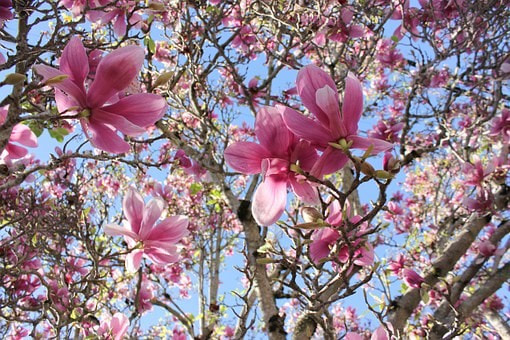



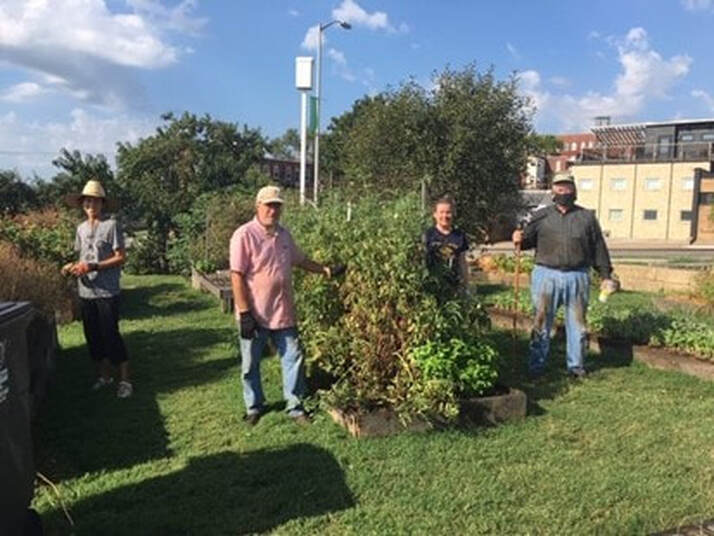



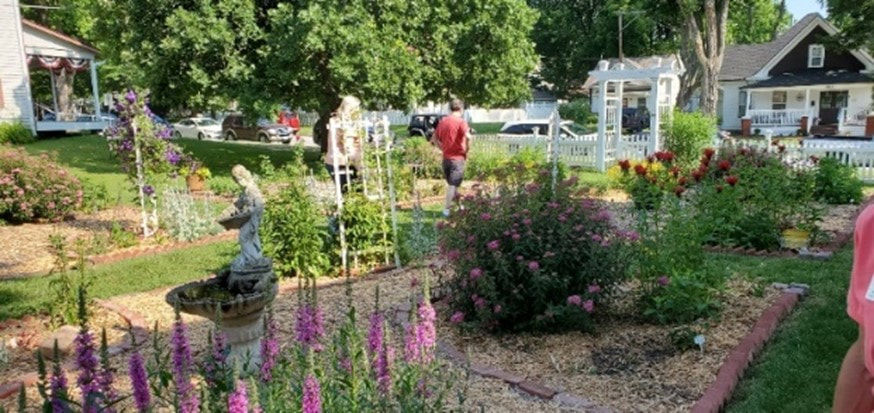


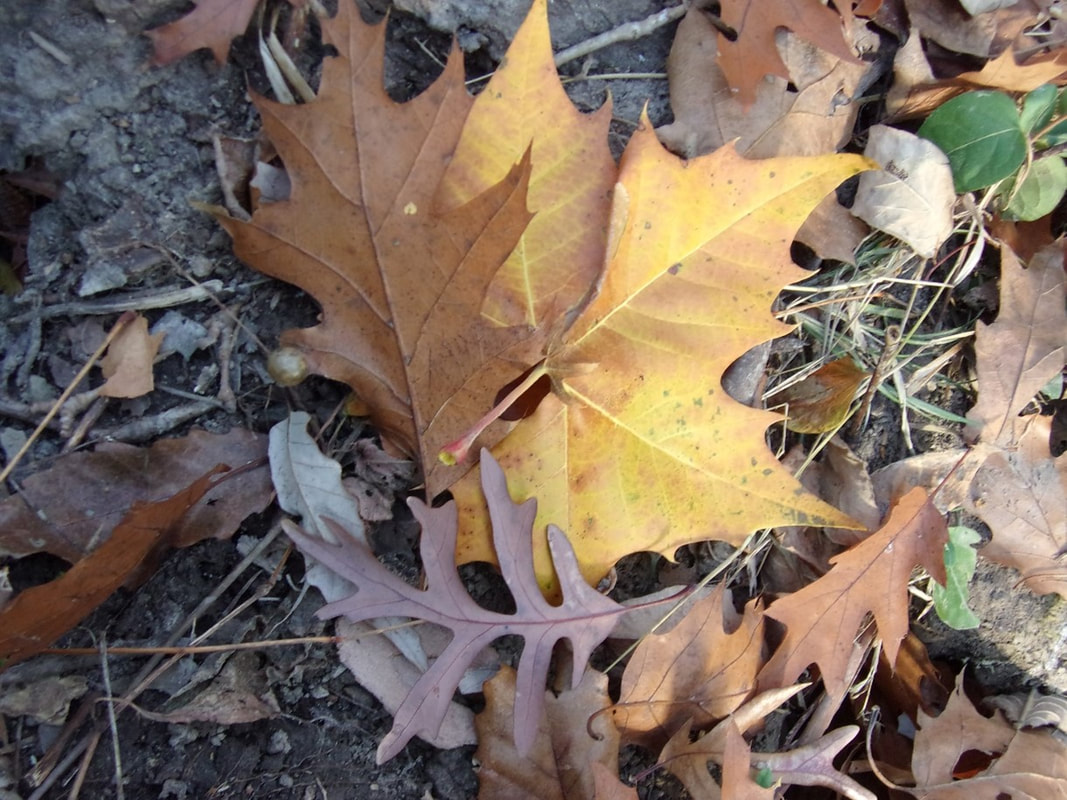
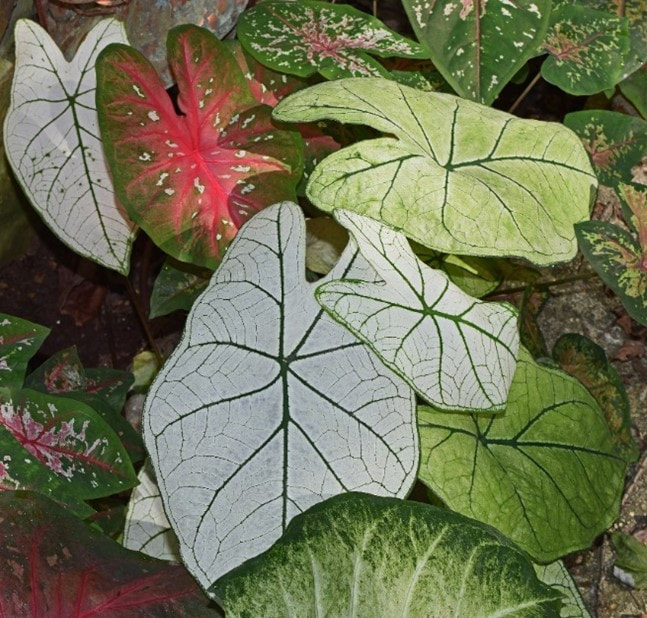
 RSS Feed
RSS Feed
